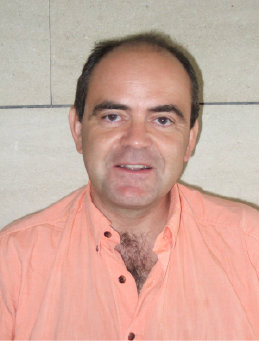Specialized iNANO Lecture: Designing drugs on an intrinsically disordered protein involved in pancreatic cancer
Dr. José Luis Neira, Institute of Molecular and Cellular Biology, Miguel Hernández University, Elche (Alicante), Spain
Info about event
Time
Location
iNANO teaching room 1593-226

Dr. José Luis Neira, Institute of Molecular and Cellular Biology, Miguel Hernández University, Elche (Alicante), Spain
Designing drugs on an intrinsically disordered protein involved in pancreatic cancer
Intrinsically disordered proteins (IDPs) are prevalent in eukaryotes. They are often associated with human diseases, and they constitute drug-design targets. NUPR1 (or p8) is a multifunctional IDP, over-expressed and involved in human pancreatic ductal adenocarcinoma (PDAC) development. In the last ten years we have been studying its conformational propensities and its interaction with other biomolecules. P8 binds DNA, but it does not acquire a folded structure upon binding; in contrast, its phophorylated form acquires more structure in the presence of DNA, but the structure is not rigid. The protein also binds to: (i) prothymosin alpha, helping in controlling apoptosis; and (i) the male specific lethal protein (MSL1), helping in DNA-repair, with, in both cases, low-micromolar affinity. In both cases, the p8-protein complexes are “fuzzy” (disordered). By screening a 1200-compound FDA-approved library, fifteen candidates have been selected, and their interactions with p8 have been characterized by experimental (fluorescence, isothermal titration calorimetry (ITC) and NMR) and simulation techniques to provide structural models of the p8-drug complexes. Upon binding of the drug, p8 remained disordered. These compounds were tested in PDAC-derived cell-based assays, and induced cell-growth arrest and senescence, reduced cell migration, and decreased chemoresistance, mimicking NUPR1-deficiency. The most effective compound completely arrested tumor development in vivo on xenografted PDAC-derived cells in mice. Thus, we have been able to describe first occurrence of drug design versus an intact IDP, proving the possibility to target the interface of an IDP that remains disordered upon binding to its natural partners. We have also started to explore the binding of p8 to other molecules (namely dendrimers and peptides) and we have found out that the binding region is the same as that of the organic compounds, which hamper development of PDAC.
Host: Prof. Daniel Otzen, iNANO & Dept. of Molecular Biology and Genetics, Aarhus University
